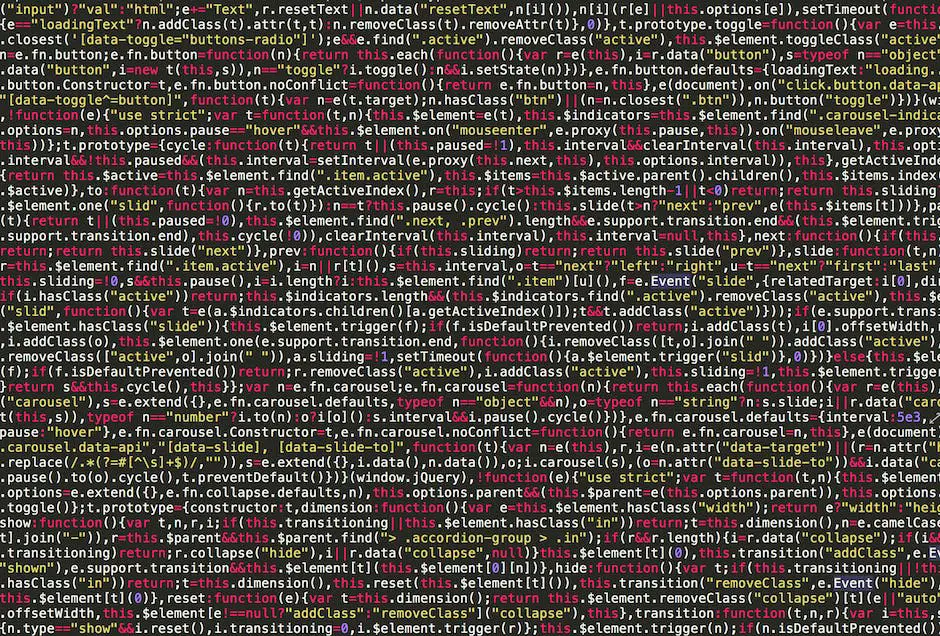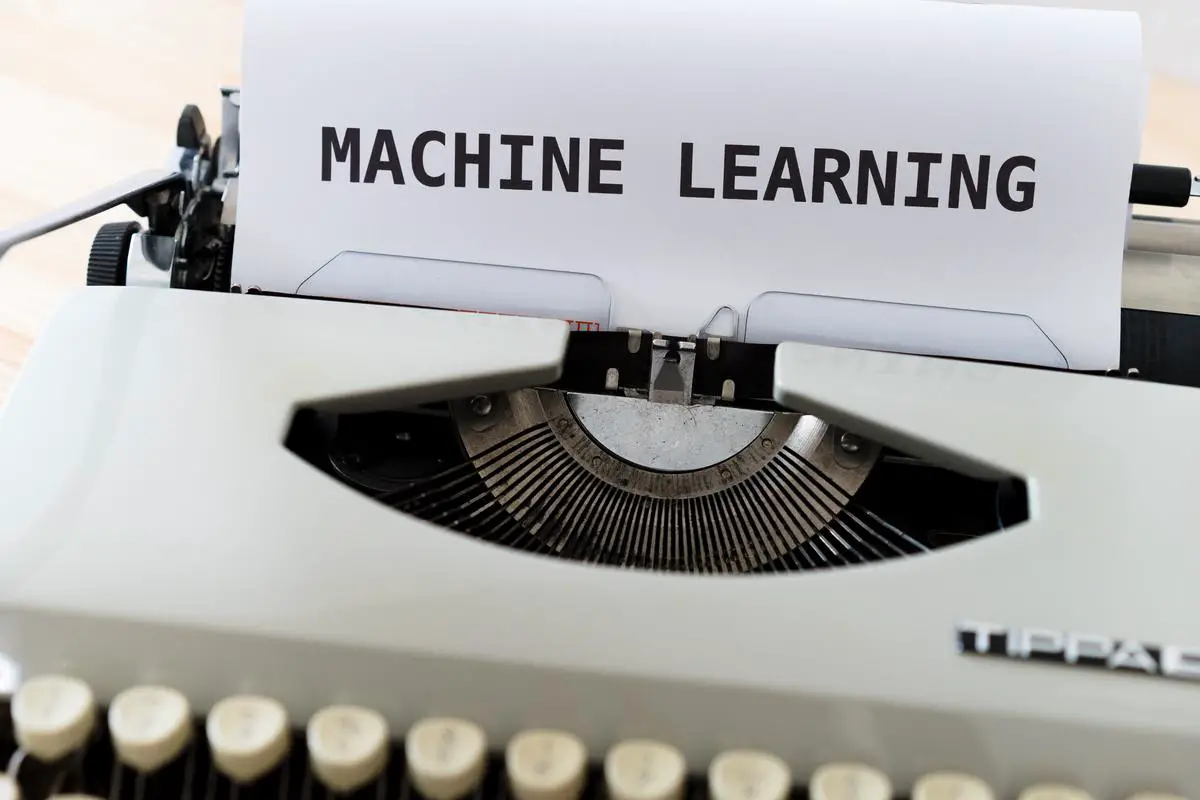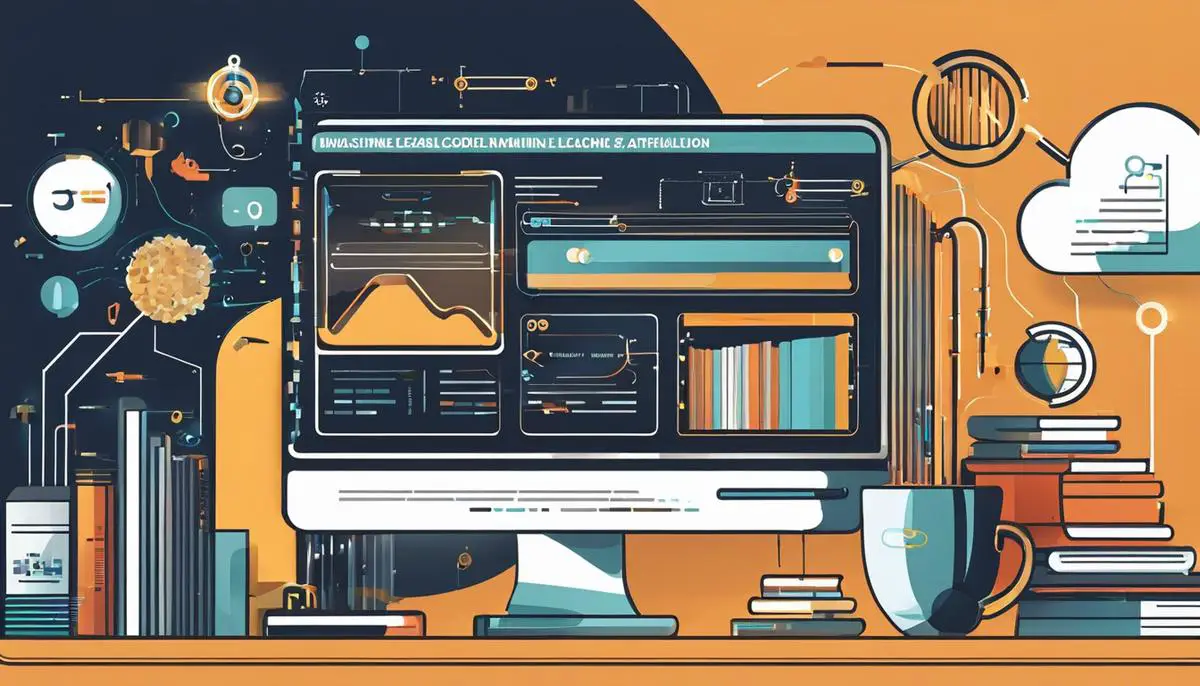As we tread forth into an era characterized by digital advancements and artificial intelligence, it becomes increasingly vital to understand the evolution and implications of machine learning. Particularly, its application in the sector of code translation presents potential for transformative changes in our digital ecosystems. Code translation or source-to-source compilation, is a tool that aids in making software compatible across a multitude of platforms, fostering a streamlined communication between various coding languages. The potency of machine learning in this respective domain is vast and beginning to unfold. In our exploration of this dynamic intersection between machine learning and code translation, we hope to unravel the present landscape, challenges, solutions and future prospects.
The Concept and Importance of Code Translation
Decoding the Principles and Significance of Code Translation in Computer Science
The field of computer science, a realm infatuated with algorithms and information systems, is ceaselessly unfolding new horizons for human intellect. Among the various corners of this expansive territory, one that repeatedly piques interest is the process of code translation. This methodology operates under discrete regulations and holds significance that extends beyond apparent comprehension. The following lines delve into the functionings and implications of this elemental computer science practice, presenting this complex process in comprehensible terms.
Key Principles Underpinning Code Translation
Code translation, set at the crossroads of theory and practice, operates under several essential principles. First and foremost is the idea of unifying the user’s intent with the computer’s understanding. Programs begin as high-level code, an abstraction of programming language that mirrors natural language, readily understood by human beings. However, computers are not proficient in this linguistic level and process information in a lower-level machine language.
Herein lies the crucial task of the code translator. It metamorphoses high-level language into machine-understandable instructions, bridging the gap between human creativeness and technological capability. An intellectual marvel, code translators employ distinct techniques like compiling or interpreting to make this transmutation possible. Translators rely on precise algorithms and syntactic rules to ensure that the translated code reliably executes the correct operations, maintaining fidelity to the programmer’s intentions.
The Significance of Code Translation in Computer Science
Understanding the principles behind code translation allows for an appreciation of its substantial role in computer science. By enabling the comprehension of computer functions at a human-conversational level, code translation fortifies the mutual dialogue between machines and humanity.
The prospect of programming in machine language, a tedious and error-prone activity, could deter potential computer scientists. Code translators wield the potential to transform the esoteric machine language into an accessible form for a greater audience. Thereby, this process is invaluable in democratizing computer science.
Moreover, the evolution of computer science is inexorably tied to linguistic diversification. Each programming language has unique strengths and applicability, allowing programmers to choose the optimal one for each task. However, without the ability to translate these diverse languages into machine code, their potential remains untapped. Code translation is hence pivotal in ensuring the full utility of each programming language.
Furthermore, efficient code translation consumes fewer system resources, enhancing the operational performance of programs. This aspect directly contributes to the rapid and smooth functionality of countless digital technologies used in everyday life.
The intricate dance of code translation, with its unique set of principles and substantial impact, constitutes an essential piece in the grand puzzle of computer science. By enabling communication between distinctly different languages and facilitating diverse programming language utility, it continues to augment the capacities of this groundbreaking field and fuel its ceaseless exploration. Indeed, code translation is a testament to the intellectual dynamism at the core of the computer science world.

Fundamentals of Machine Learning
Machine learning – the buzzword that has been echoing in the halls of computer science for several years. This comparatively new method of developing algorithms has not only magnified the scope of problem-solving, but also launched us into an age where machines can learn, predict, and make decisions with an efficiency which, at times, surpasses human capability.
The crux of machine learning lies in its comprehension of patterns. Unlike traditional algorithms that strictly follow pre-defined rules, machine learning algorithms learn from data. The more data they consume, the smarter they become. This unconventional approach has revolutionized the prospect of problem-solving by providing an avenue for independent realization and adjustment based on patterns in the input data.
In this realm of algorithm development, there exist two primary pillars: supervised and unsupervised learning. Supervised learning, much like a student guided by an educator, has known inputs and outputs for training. It recognizes patterns and predicts outcomes for new, unknown inputs. On the other hand, unsupervised learning is more autonomous. It identifies hidden structures in unlabeled data without relying on pre-existing labels.
While the underlying mathematics of machine learning can be complex, the general principles are accessible. Each algorithm uses a model, which is essentially a mathematical relationship between the inputs and outputs. The model fine-tunes its parameters through a process called training, which reduces the error between the model’s predictions and actual data.
Perhaps the most fascinating aspect of this burgeoning field is its diverse applicability: from recognizing faces in social media photos to detecting fraudulent credit card transactions, predicting stock prices, and even generating text! The tremendous power of machine learning does not limit itself to any specific domain.
Machine learning’s contribution to computer science is piping hot and appears to be only growing hotter. It offers a remarkable potential to solve complex problems effortlessly, transforming the landscape of computer science. Rather than being confined to pre-defined instructions, the contemporary algorithmic approach is shifting towards machines that learn, evolve, and deliver results that are more versatile, robust, and dynamic.
The pivot towards machine learning does not eclipse the grandeur of code translation; rather, it signifies the exciting fusion of established practices with modern techniques. As machine learning accelerates its stride, we’re observing a paradigm shift that promises unfolding discoveries, innovative solutions, and an inexhaustible grid of opportunities in the computer science landscape.

Machine Learning Techniques for Code Translation
Leveraging Machine Learning for Code Translation: A Deeper Investigation
To appreciate machine learning’s role in code translation, it’s quintessential to delve into its utility in this sphere, its methodology, and the consequent implications.
Machine learning, an ingenious methodology of data analysis that automates analytical model building, has started to permeate the realm of code translation. Its algorithms begin from a foundation of statistical analysis to find structures within data and build models applicable for predicting future outcomes. The juxtaposition of machine learning with traditional code translation methods propels it from mere efficiency in operations to more intelligent, self-learning systems.
Machine learning algorithms deployed for code translation function predominantly using supervised learning methods. These algorithms fall under the broad ambit of Artificial Intelligence (AI) and perform by using a training dataset to learn a target function, which maps input variable values to desired output values. This mapping enables machine learning algorithms to predict future outcomes without human intervention effectively.
These algorithms ingest programming languages (the input) and produce another more universally understood format (the output). The elaborate transformation process includes tokenizing, parsing, abstract syntax tree (AST) building, and finally, compiling as per the target language’s requirements. The key to achieving this involves first training the machine learning model on large sets of bilingual data, enabling it to discern patterns to generate translations.
The applications of this fascinating integration of machine learning into code translation are increasingly diverse. One noteworthy use-case implicates the adaptation of legacy codes (older codes utilized in significant systems) to modern programming languages. This enables modern systems and hardware to understand and use these legacy codes, thus extending their longevity.
In summary, machine learning instigates a paradigm shift in the field of code translation. Its impact resounds strongly within the scientific quarters and paints a promising picture for the future. It perfectly exemplifies how the fusion of established practices with modern technological advancements breeds rich potential for game-changing innovations and solutions.
Integrating machine learning into code translation not only paves the way for more sophisticated, autonomous systems but also holds the potential to redefine the contours of computer science. The promising promise of unfolding discoveries and innovative solutions, no doubt puts machine learning at the forefront of this ever-evolving discipline.

Challenges and Solutions in Machine Learning for Code Translation
Machine learning’s role in code translation presents intriguing prospects, yet equally challenging obstacles. By leveraging machine learning, there lies an opportunity to automate complex, time-consuming tasks and minimize the possibility of human error. However, applying machine learning algorithms to code translation is not without its difficulties. Contemplation of these hurdles is vital for professionals involved in the field, intending to overcome these challenges and harness the full potential of machine learning in code translation.
The complex nature of programming languages is one of the primary hurdles in this confluence of machine learning and code translation. Each programming language possesses its unique syntax and semantics, giving it a distinct flavor. In interpreting these differences, machine learning algorithms must be highly adaptable and accurate. Just a slight misinterpretation can cause catastrophic errors in the translated code. Therefore, comprehending the nuances of programming languages and ensuring the machine learning model is sensitive to these nuances is crucial.
Data scarcity is another challenge. Training machine learning algorithms require a considerable volume of data. Obtaining a vast dataset of genuinely parallel source-target code in numerous programming languages may not always be feasible. The situation is exacerbated further when addressing legacy codes, considering their often-archaic documentation and potentially obsolete programming practices.
The “black box” nature of machine learning models can also pose a challenge. Despite a model’s high predictive accuracy, code generated by these models can sometimes be difficult to comprehend. Lack of interpretability can lead to mistrust and lower adoption rates, especially in critical systems where understanding the code’s functionality is essential.
Despite these challenges, developing strategies for their mitigation is possible. An ensemble of machine learning models, each trained on specific programming languages, could offer advantages in handling the idiosyncrasies of different languages.
Moreover, some pioneering projects, such as GitHub’s CodeSearchNet Challenge, aim to build a massive, high-quality database for machine learning on code. Access to such resources can alleviate data scarcity. Additionally, seeking the help of professionals skilled in legacy codes can contribute to creating reasonable training sets.
Last but not least, advancements in Explainable AI (XAI) aim to make machine learning models more transparent and less of a “black box”. By creating interpretable machine learning models, confidence in the generated code can be enhanced. Furthermore, humans interacting with these systems can learn and refine their skill sets, leading to the democratization of coding.
In conclusion, while there are obstacles to integrating machine learning with code translation, these can be mitigated with strategic approaches and advancements in technology. The union of machine learning and code translation can be a transformative one, leading not only to increased efficiency and optimization but also to democratization, thereby opening up a whole new world of possibilities in the realm of computer science. The future holds promise; it is a fascinating journey of unraveling mysteries, pushing boundaries, and creating novel solutions. The journey, while riddled with challenges, is part and parcel of the thrilling pursuit of knowledge and innovation in the continuously evolving field of computer science.

Photo by markuswinkler on Unsplash
Impact and Future Prospects of Machine Learning in Code Translation
As machine learning continues to foster innovation in numerous fields, an intersection worth scrutinizing is its potential impact on code translation. Having examined the underlying principles and functions of code translation, and the fundamental aspects of machine learning, a distinct overlap emerges that promises unique possibilities: utilizing machine learning methodologies for enhanced code translation processes.
Indeed, these two areas of computer science share a symbiotic relationship, each contributing towards optimized problem-solving and the advancement of technology. But what lies within this emerging confluence and how might the future of coding transform as a result?
Machine learning in code translation tasks is not just a coincidence of compatible concepts, but a dynamic application harboring a rich potential. Its envisaged usage includes harnessing machine learning models to translate one programming language into another– essentially automating the “translation” of codes. This supersedes simple syntax replacement– it underpins the re-creation of code structure, semantics, and functionality, a feat of considerable complexity.
Yet, machine learning models, with their ability to infer patterns and adapt to analytical tasks, position them as unique tools appropriate for this challenge. For instance, adapting legacy codes into modern programming constructs is a viable use-case. These vintage codes present a bottleneck in digital innovation– a problem that can be eased with machine learning aiding the transition from old to more efficient modern code structures.
Grasping this potential, it is imperative to navigate the significant challenges posed– chiefly, the complex nature of programming languages and the scarcity of training data for machine learning models. Merely understanding syntax is inadequate; one should grasp the intended functionality, potential edge cases, and the surrounding ecosystem unique to each language.
This intricate endeavor needs vast amounts of high-quality code databases for training AI models. The current deficiency of these resources illuminates a substantial hurdle. Moreover, the ambiguity within “black box” machine learning models signals a need for the development of explainable AI. This denotes machine learning models that not only translate codes but offer insights into their decision-making process, an essential part of troubleshooting and optimization in coding.
Despite these challenges, potential solutions are in the offing. Integrating machine learning and code translation is poised to develop into an exciting area of computer science. Possible strategies to cope with these hurdles include using a combination of AI models to handle various aspects of code translation and generating high-quality datasets for training AI models.
Further advancements, like Explainable AI, promise to mitigate the mystery surrounding machine learning decisions and outcomes. These innovations strive to combine the computational power of AI with the necessity for human understanding, enhancing transparency and cognition in code adaptations.
In essence, the fusion of machine learning and code translation is charged with immense potential, including increased efficiency and optimization in coding processes. It holds the torch for democratizing coding– making it more accessible and engaging for an ever-diversifying community of code enthusiasts and professionals. This exhilarating journey of innovation in machine learning-based code translation justifiably incites an optimistic vision for the future. As this union unfolds, it is expected to add a remarkable page in computer science– a testament to human ingenuity in the quest for knowledge and efficiency.

Evidently, the symbiosis between machine learning and code translation can profoundly alter the trajectory of software development. Substantive progress has been achieved, yet various challenges lie in the path, demanding thoughtful solutions and yielding many avenues for future research. The strategies we contemplate today will shape the framework upon which future generations will construct their digital edifices. Hence, as we continue to delve deeper into the intricacies of machine learning for code translation, we must take an anticipatory stance, gazing beyond the immediate horizons, preparing for the dynamic future trends that will shape the industry. In this rigorous pursuit, we may expand the limits of our understanding and explore unchartered territories in digital technology.

